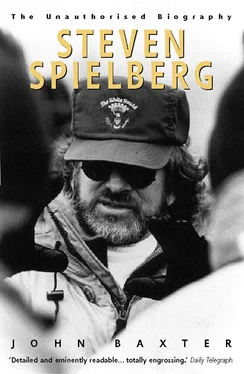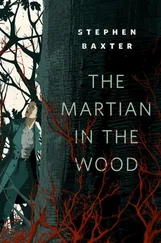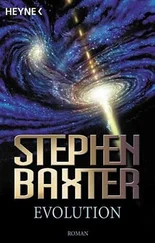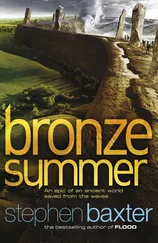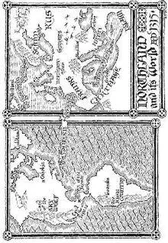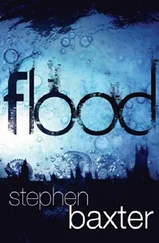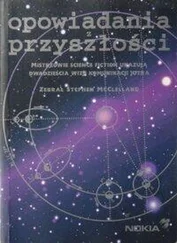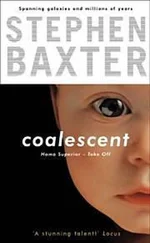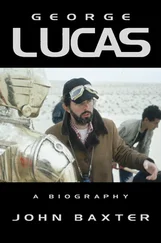1 ...6 7 8 10 11 12 ...31 The wave of cheap science fiction films that was Hollywood’s response to the sf publishing boom washed through American cinemas throughout 1959 and 1960. Spielberg was banned from seeing the 1958 I Married a Monster from Outer Space , a relatively modest and reticent film despite its gaudy title, but went anyway, and was racked by nightmares. In particular he came to admire the work of Jack Arnold, who directed The Incredible Shrinking Man , It Came from Outer Space , The Space Children and The Creature from the Black Lagoon . The catchpenny titles disguised thoughtful exercises in imagination and suspense which made evocative use of natural surroundings and domestic interiors. The shrinking man in Richard Matheson’s story, exposed to fallout from an atomic test, dwindles away in an ordinary suburban home; the film’s menaces are a cat and a spider. In It Came from Outer Space , written by Ray Bradbury, aliens arrive outside a small desert township. The man who first makes contact with them, John Putnam, is an archetypal Spielberg character, an unassuming Jeffersonian natural philosopher and amateur astronomer who muses about the nature of the universe and the desert, to both of which he has a gently mystical attitude.
Spielberg shared the general enthusiasm for The Thing (from Another World) , a rare example of a major director, Howard Hawks, dealing with an sf subject. The script also had an important pedigree. It was based on a story called ‘Who Goes There?’ written by John W. Campbell before he became editor of Analog . Like most of Campbell’s work, it is refreshingly iconoclastic. A crashed alien ravages an Arctic research station, smashing down the scientist who tries to befriend it. It’s left to a few tough professional airmen to kill it off and save the world. At the end, a reporter broadcasts the story, warning his listeners, ‘Watch the skies. Keep watching the skies.’
For all the film’s flair, however, Hawks’s right-wing paranoia always jarred. It’s to Arnold’s films (and Bradbury’s script for Outer Space ) that much of Spielberg’s later work is traceable. After Close Encounters of the Third Kind was released, Spielberg asked Bradbury, ‘Well, how did you like your film?’ and explained he’d been inspired by It Came from Outer Space . Bradbury and Arnold’s idea, that alien visitors may be benign, and concerned mainly to return home as quickly and quietly as possible, would surface in both Close Encounters and E.T. The fathers of the ‘space children’ who discover an alien in a beachside Californian cave work on a nearby scientific project and share the dislocated life Spielberg knew well, and which he evoked in The Goonies . And while the Black Lagoon may only have been in a corner of the Universal backlot lake, the underwater footage shot in the crystal springs of a Florida park played so effectively on the sense of ‘something’ lurking below us where we swim that the aquaphobic Spielberg paid it homage in the opening scenes of Jaws .
From the start, it wasn’t the atmosphere of fantasy films Spielberg enjoyed so much as their depiction of alternative realities through model work, special effects and elaborate make-up. His sisters, resented because of the attention they drew from his mother, and thus away from him, became victims of his exercises in imagination. He would scare them by building his face into a horror mask with papier mâché made from wet green toilet paper, or would lurk outside the window of Anne, the youngest, and groan ‘I am the moooooon’ until she became hysterical. He convinced them that the bedroom closet hid the decomposing body of a World War II airman, then left it to their curiosity to peek in at the plastic skull he’d hidden there, with goggles over the eyes and a flashlight inside. After they had been terrified by William Cameron Menzies’ Invaders from Mars , which featured the disembodied head of the Martian super-mind, played by an actress with green-painted face, fringed with tentacles, in a glass bubble, he locked them in the closet, this time with an empty fishbowl within which, he said, the head would materialise. All these domestic horrors and more would be recycled in Poltergeist .
War films could be just as interesting as science fiction, providing there were elaborate uniforms, and plenty of buildings were blown up. Firms like Castle Films sold World War II documentaries on 8mm, and Spielberg used some of these as stock footage for a flying story called Fighter Squadron . Arnold persuaded Skyharbor airport in Phoenix to let Steven shoot a friend in the cockpit of a P-51. In 1960, inspired by his father’s purchase of a war-surplus Jeep, Spielberg made the forty-minute Escape to Nowhere , about a World War II American platoon evading a Nazi army in the Libyan desert. He found a few fake German helmets, put them on friends and had them walk slowly past the camera, passing the helmets back down the line so that it looked like an army. Leah drove the Jeep and created uniforms in Wehrmacht grey in which Steven costumed his sisters and friends, who were then machine-gunned and forced repeatedly to roll down a hill in the desert which stood in for North Africa.
‘There was always a camera in his hands,’ Leah says. ‘Once he took a big cardboard carton from the supermarket and cut windows and doors and took it in the back alley and set it on fire to film it. When we saw it, it looked like a real building burning. These are things that in retrospect you try to figure out, but at the time it just seemed normal. He was my first child, and having no prior experience I thought all kids played like that.’
Escape to Nowhere won a prize at the Canyon Film Festival – a 16mm camera. Knowing he couldn’t afford 16mm film processing, Spielberg traded it for a more sophisticated H8 8mm Bolex. At the same time, with a little help from his father, he got a Bolex Sonorizer, with which he could put a soundtrack on his magnetically striped film.
He began to have friends, nerds like himself with over-active imaginations. During the run of the dinosaur film The Lost World in 1960, he and friends mixed white bread, Parmesan cheese, milk, creamed corn and peas in a paper bag and smuggled it into the Kiva. Then they made vomiting sounds and dripped the mixture from the balcony. It started a chain reaction of vomiting. The film was stopped and the lights went up as the malefactors escaped down the fire stairs.
Other attempts at sophistication didn’t work. ‘I’ll never forget the time I discovered girls,’ he says. ‘I was in the fifth grade. My father took me to a drive-in movie with a little girlfriend of mine. This girl had her head on my arm, and the next day my parents lectured me about being promiscuous at an early age. My growing up was like a sitcom ABC buys for a season before they drop it.’ Never passion’s plaything, except where movies were concerned, Spielberg would have a chequered emotional life that headed inexorably towards a marriage Ozzie and Harriet Nelson would have envied.
By the early sixties, Arnold and Leah’s marriage was failing. Spielberg recalled Arnold storming out of the house, shouting, ‘I’m not the head of the family, yet I am the man of the family’ – a line he would recycle in Duel . Steven fled from the cold silences of the house to the cinema’s warmth. In 1962, he saw the film that was to inspire him above all others. David Lean had spent years in the desert making Lawrence of Arabia , a truly epic picture of a larger-than-life historical character whose acts were mirrored and amplified by the landscapes in which they took place. Robert Bolt’s dialogue was minimal – indeed minimalist; aphorisms, orders, insults, seldom more than a sentence long. This was Ford crossed with Capra, but mediated by Lean. For the rest of his life, Spielberg would rate Lawrence as the one true classic of his early film-going. ‘I really kicked into high gear,’ he said of seeing it, ‘and thought, “This I gotta do. I gotta make movies.”’
Читать дальше
